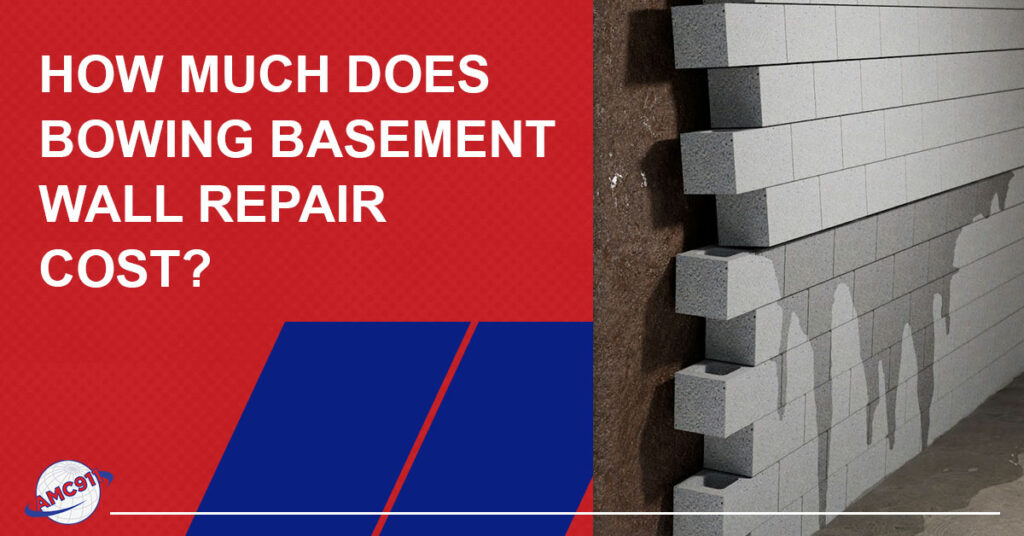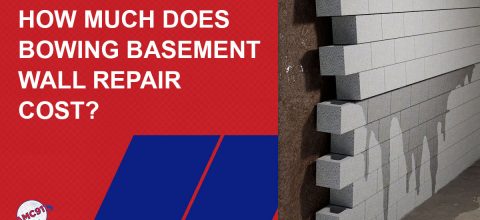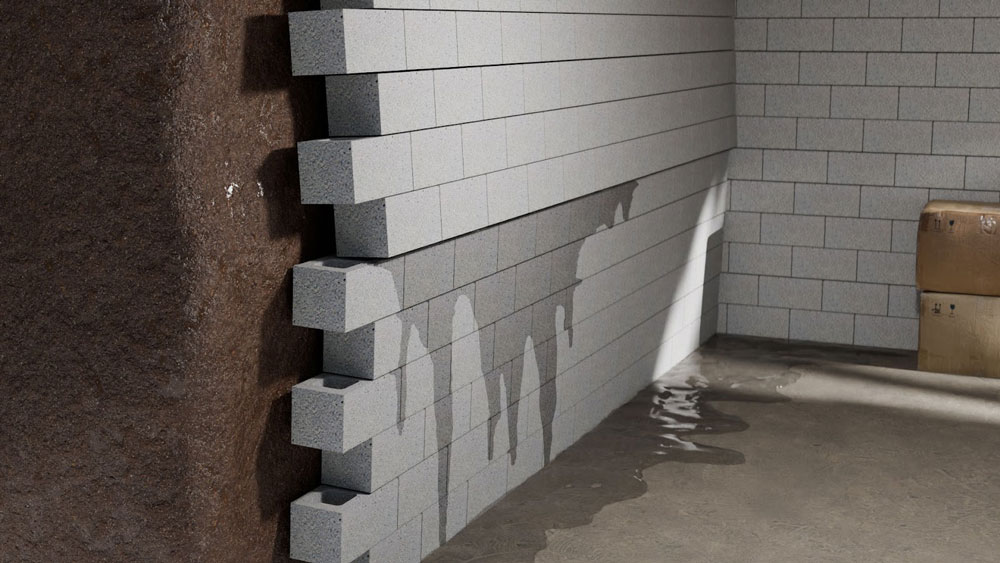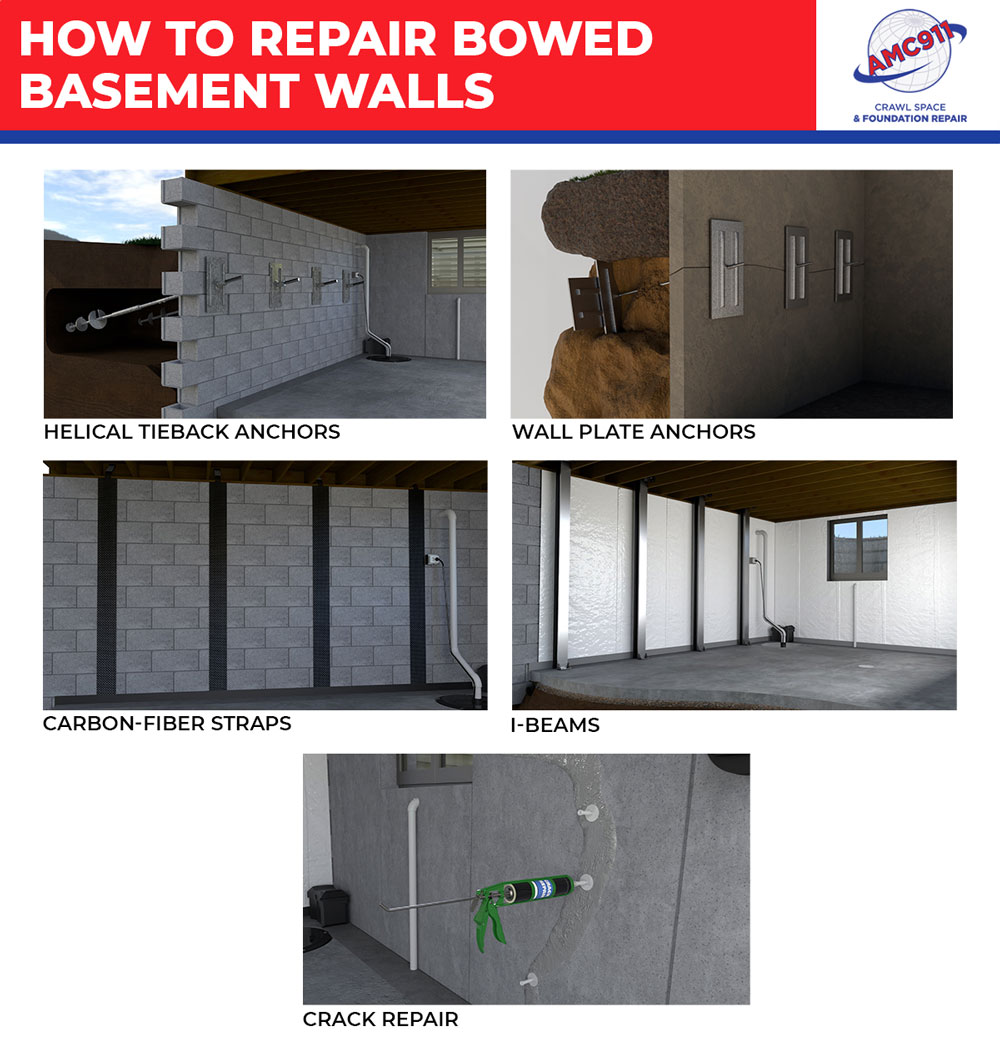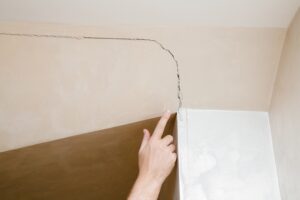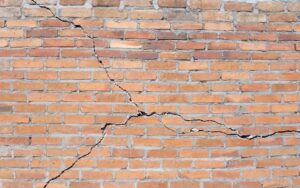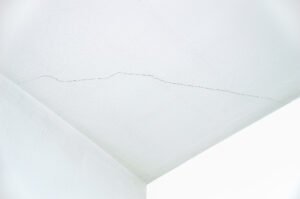Bowing basement walls are a serious concern for any homeowner. Not only do they indicate potential structural problems with a home, but they can also lead to significant safety issues if not addressed promptly. Understanding the causes, acceptable levels of bowing, repair options, and associated costs is crucial for homeowners looking to protect their investments and ensure the safety of their living spaces.
What Causes a Basement Wall to Bow?
Several factors can contribute to the bowing of basement walls:
- Hydrostatic Pressure: This situation arises when water gathers in the soil close to the foundation of a structure, leading to an accumulation of moisture. As more water collects, it exerts significant pressure against the foundation walls. This can compromise the foundation’s structural integrity, causing bowing and other issues such as cracks and leaks.
- Soil Expansion and Contraction: Variations in soil moisture content can lead to soil expansion and contraction, exerting pressure on basement walls. For example, soils with a high clay content retain water and swell, pushing against the foundation. This process can have significant structural implications for buildings, as the fluctuating pressure can lead to cracks and bowing, compromising the integrity of the basement walls.
- Heave: In colder climates, the process known as the freeze-thaw cycle, where water in the ground freezes and expands, then thaws and contracts, can significantly impact the structural integrity of a foundation. This cycle causes the ground to heave or lift and exert lateral or sideways pressure on the walls.
- External Lateral Pressure: Placing heavy objects, like large trucks or dumpsters, close to the foundation can cause damage by exerting lateral pressure on the walls. This extra force can worsen problems related to bowing and compromise the structural integrity.
How Much Bowing Is Acceptable for a Basement Wall?
A bowed wall is a tell-tale sign of structural issues. Hence, any amount of bowing should not be ignored. As a basic guideline, if a wall bends or leans inward by more than half its overall thickness, it’s usually a sign that replacement is necessary to ensure the structure’s safety. To illustrate, if your basement wall is 10 inches thick and bows inward by five or more inches, your home will no longer be safe unless that wall is replaced. Hence, any cracks or minimal movement in the wall should be taken seriously and promptly evaluated by an expert. This cautious approach ensures the structural integrity of the building and the safety of its occupants. It also minimizes repair costs since correcting 1 inch of bowing is far less invasive and labor-intensive than repairing 4 inches.
How to Repair Bowed Basement Walls
Several methods are available for repairing bowed basement walls, depending on the severity of the bowing and the specific conditions of the wall:
- Helical Tieback Anchors: These systems are installed from the basement’s interior by drilling a small hole in the wall. They effectively correct structural issues without excavation or significant disruption to the building’s interior. Tiebacks strengthen the wall, preventing future bowing.
- Wall Plate Anchors: This system consists of an interior wall plate, an exterior anchor, and a high-strength rod that connects both. It offers additional lateral support to help stabilize bowing or bending walls.
- I-Beams: Reinforcing bowed walls with steel I-beams has been a common practice to ensure the structural integrity of buildings. While effective in correcting and stabilizing bowed walls, this method has begun to fall out of use because it can be costly and visually intrusive. The use of carbon-fiber straps is replacing it.
- Carbon-Fiber Straps: A contemporary and less intrusive approach involves using straps from carbon fiber kevlar sheets coupled with epoxies. This method effectively repairs and stabilizes bowing walls, offering a strong and durable solution without excavation and disruptive construction work.
- Crack Repair: Epoxy injections can effectively repair cracks in basement walls, a common issue associated with bowed walls. This method involves injecting a high-strength epoxy resin into the cracks, which then hardens to provide a waterproof seal to the crack. While epoxy injections address the visible damage by filling and sealing the cracks, they do not address the underlying issue of the bowing itself.
Note: To explore basement waterproofing solutions to prevent future wall bowing, read the article: How Much Does It Cost to Waterproof a Basement?
How Much Does It Cost to Repair a Bowed Basement Wall?
Repair costs for bowed basement walls can vary widely depending on several factors, particularly the extent of the damage. Extensive wall stabilization or straightening projects can be costly. Consider the following price contributing factors:
- Extent of the Damage: When the bowing of a structure is more severe and involves significant structural damage, it necessitates a more comprehensive approach to repair. Correcting 1 inch of bowing is far easier than correcting 4 inches with extensive cracking. Consequently, these extensive repair efforts lead to an increase in the overall cost of the project.
- Chosen Repair Method: Each repair method involves different amounts of labor and material, impacting the final cost. For instance, installing carbon-fiber straps is much cheaper than installing wall plate anchors, especially since no excavation is required. Similarly, repairing a wall is more affordable than replacing it.
- Accessibility and Permitting: If excavation is required, the amount of accessibility for the machinery to reach the foundation will play a role in the labor costs. Tight spaces may delay repairs or need more specialized equipment. Also, permitting costs vary from one region to another, which is out of the control of the foundation repair company.
- Stabilization vs. Straightening: In certain situations, homeowners may stabilize a wall without straightening the bowing. This will fix the foundation’s structural integrity, but the result will not be as visually appealing. While the extra step to straighten the wall will restore your basement’s original appeal, it will cost more.
If you’re noticing signs of bowing in your basement walls, it’s crucial to act quickly to address the issue before it worsens. The sooner you act, the sooner you restore your home’s structural integrity and the more money you save. AMC911 Crawl Space & Foundation Repair specializes in various methods to repair bowing or leaning walls, amongst other foundation problems. Don’t wait for the situation to escalate. If you live in the Hampton Roads area and Eastern Shore of Virginia, schedule an inspection and repair quote with AMC911 today. With over 25 years of experience, our expert, in-house team is eager to serve you.

